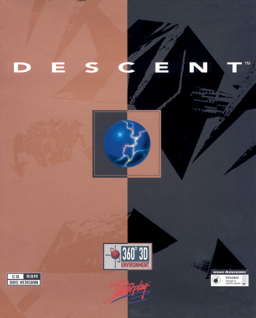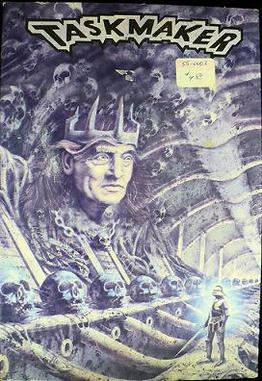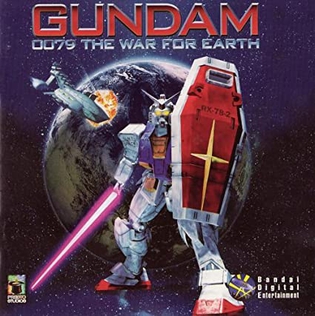
Exile is a series of role-playing video games created by Jeff Vogel of Spiderweb Software. They were released as shareware titles for Macintosh and Windows systems. Exile III was also ported to Linux by a third party. There were four games released in the series. All of the games were later revived in the Avernum series. Common to all games in the Exile series are 2D graphics and basic sound. The graphics in the first versions of Exile I and II had simple textures, colours and outlines, which were then replaced in later versions with Exile III's graphics. The games are designed to be non-linear and long in gameplay length.

Escape Velocity is a single-player role-playing space trading and combat video game series first introduced in 1996 by Ambrosia Software for the Apple Macintosh. Two other similar games based on the original, EV Override and EV Nova, followed in 1998 and 2002 respectively, the latter of which is also available on Microsoft Windows. In addition there is a trading card game available based on the storyline of the EV Nova universe.

Descent is a first-person shooter (FPS) game developed by Parallax Software and released by Interplay Productions in 1995 for MS-DOS, and later for Macintosh, PlayStation, and RISC OS. It popularized a subgenre of FPS games employing six degrees of freedom and was the first FPS to feature entirely true-3D graphics. The player is cast as a mercenary hired to eliminate the threat of a mysterious extraterrestrial computer virus infecting off-world mining robots. In a series of mines throughout the Solar System, the protagonist pilots a spaceship and must locate and destroy the mine's power reactor and escape before being caught in the mine's self-destruction, defeating opposing robots along the way. Players can play online and compete in either deathmatches or cooperate to take on the robots.

Pool of Radiance is a role-playing video game developed and published by Strategic Simulations, Inc (SSI) in 1988. It was the first adaptation of TSR's Advanced Dungeons & Dragons (AD&D) fantasy role-playing game for home computers, becoming the first episode in a four-part series of D&D computer adventure games. The other games in the "Gold Box" series used the game engine pioneered in Pool of Radiance, as did later D&D titles such as the Neverwinter Nights online game. Pool of Radiance takes place in the Forgotten Realms fantasy setting, with the action centered in and around the port city of Phlan.
Escape Velocity Nova is a video game developed by Ambrosia Software in collaboration with ATMOS. It is the third game in the Escape Velocity series of space trading and combat games. It was released on March 19, 2002 for Mac OS X and Mac OS 9, and later ported to Windows and released on July 11, 2003. The game's premise, set in a time period after mankind has discovered hyperspace technology, grants the player freedom to take missions, trade goods, steal from other ships, and enter one of six storylines.

Llamatron is a multidirectional shooter video game programmed by Jeff Minter of Llamasoft and released in 1991 for the Atari ST and Amiga and in 1992 for MS-DOS. Based on Robotron: 2084, players of Llamatron control the eponymous creature in an attempt to stop an alien invasion of Earth and rescue animals—referred to as "Beasties"—for points. Players advance by destroying all of the enemies on each level using a laser that fires automatically in the direction that the Llamatron is moving. Various power-ups exist to aid the player in defeating the wide variety of enemies and obstacles they face along the way.
Spiderweb Software is an independent video game developer founded in 1994 by Jeff Vogel in Seattle, Washington. Its primary focus is on creating demoware games for the Mac, Microsoft Windows, Android and the iPad. The games emphasize storytelling and turn-based gameplay and use a retro style of graphics.
Avernum is a series of demoware role-playing video games by Jeff Vogel of Spiderweb Software available for Macintosh and Windows-based computers. Several are available for iPad, and were formerly available for Android.

Scarab of Ra is a Mac OS shareware computer game written in 1987 by Rick Holzgrafe and released in 1988 by Semicolon Software, with a modernized version released in 2022. It is an adventure set within an Egyptian pyramid.

Might and Magic Book One: Secret of the Inner Sanctum is an early role-playing video game, first in the popular and influential Might and Magic franchise. It was released in 1986 as New World Computing's debut, ported to numerous platforms and re-released continuously through the early 1990s.

Jazz Jackrabbit 2 is a 1998 platform game produced by Epic MegaGames. It was released for Windows, and later for Macintosh. Like the first game, Jazz Jackrabbit, Jazz Jackrabbit 2 is a side-scrolling platform game but features additional multiplayer options, including the ability to play over a LAN or the Internet. On November 30, 2017, it was re-released on GOG.com along with the first game.

Heroes of Might and Magic II: The Succession Wars is a turn-based strategy video game developed by Jon Van Caneghem through New World Computing and published in 1996 by the 3DO Company. The game is the second instalment of the Heroes of Might and Magic series and is typically credited as the breakout game for the series. Heroes II was voted the sixth-best PC game of all time by PC Gamer in May 1997.

Terminal Velocity is a shooter video game originally developed by Terminal Reality and published by 3D Realms for DOS and Windows 95, and MacSoft for Mac OS. It is an arcade-style flight combat game, with simpler game controls and physics than flight simulators. It is known for its fast, high-energy action sequences, compared to flight simulators of the time.

Wizardry: Proving Grounds of the Mad Overlord is the first game in the Wizardry series of role-playing video games. It was developed by Andrew Greenberg and Robert Woodhead. In 1980, Norman Sirotek formed Sir-Tech Software, Inc. and launched a beta version of the product at the 1980 Boston Computer Convention. The final version of the game was released in 1981.

The Dungeon Revealed is a dungeon crawl PC game created by John Raymonds and published by Woodrose Editions in 1987. The game is an enhanced commercial release of Raymonds' previous game The Dungeon of Doom, released as shareware in 1985. A final version of The Dungeon of Doom was released as a free demo for The Dungeon Revealed in 1987. Both games were released for Mac OS and were compatible with versions as late as System 7.

Marathon is a first-person shooter video game developed and published by Bungie, and released in December 1994 for the Apple Macintosh. The game takes place several centuries into the future in outer space and sets the player as a security officer attempting to stop an alien invasion aboard a colony ship named the Marathon.

Cap'n Magneto is a shareware graphical adventure game released for the Apple III in 1983 and the Macintosh in 1985. In 2020, the game was re-released as freeware. The game follows Captain Lance Magneto as he attempts to capture the Crown of Control, a mind-control device being used to commit piracy around the planet Rigel IV. As he approaches the planet the device is used on his ship, causing it to crash. The player controls Magneto and tries to collect items from the map in order to capture the Crown and leave the planet.

TaskMaker is a role-playing video game for the Macintosh. It was developed by American software company Storm Impact. Originally published in 1989 by XOR Corporation, it was upgraded and re-released as shareware in 1993 by Storm Impact, featuring color graphics and compatibility with newer versions of the classic Mac OS. The player controls a protagonist who is under the mentorship of the eponymous TaskMaker, a ruler who assigns ten different quests. Completing these quests involves solving various gameplay puzzles, along with battling monsters, and the final task involves a battle against the TaskMaker himself. TaskMaker received mixed reception regarding its overall storyline and gameplay.
Fantasoft was a computer game company which programmed and promoted a number of shareware games with a primary focus on the Apple Macintosh platform. Fantasoft has been dormant since about 2005. It was founded by Sean Sayrs, Peter Hagen, and Tim Phillips. Fantasoft was created to develop, market, and distribute the shareware game Realmz, which was MacUser Shareware Game of the Year in 1995–96. Following the success of Realmz, Fantasoft created or marketed other Macintosh and Microsoft Windows platform games, most notably Spiderweb Software's early Exile series.

Gundam 0079: The War for Earth is a video game developed by Presto Studios and published by Bandai Digital Entertainment for Macintosh, Windows, PlayStation, and Apple Bandai Pippin.


















